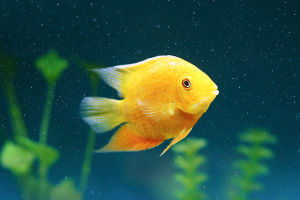Polar bears are often seen as the majestic rulers of the Arctic, symbolizing the wild and untouched beauty of the northern ice. Yet, beneath this striking image lies a grim reality: polar bears are increasingly at risk of extinction.
Lykkers, As climate change accelerates, many scientists and conservationists are raising alarms about the fate of this iconic species. Let’s dive deeper to understand the challenges polar bears face and the efforts needed to secure their future.
Why Are Polar Bears at Risk?
1. Melting Sea Ice
Polar bears rely heavily on sea ice for their survival. This ice acts as a platform from which they hunt seals, their primary food source. However, due to global warming, the Arctic sea ice is melting at an alarming rate. In some regions, the ice is now disappearing faster than ever before, reducing the polar bears' hunting grounds and forcing them to travel greater distances to find food.
2. Decreasing Food Supply
As sea ice melts, polar bears are losing access to their preferred prey: seals. With less ice, seals have fewer places to rest and breed, which in turn affects the polar bear population. As a result, many bears are forced to swim long distances or move onto land in search of alternative food sources, often with limited success. The scarcity of food leads to malnutrition and decreased reproductive rates, particularly among female bears and cubs.
3. Human Encroachment
In addition to climate change, human activities in the Arctic are further threatening polar bears. Oil and gas exploration, shipping routes, and increased human settlements are all contributing to habitat degradation and increased human-wildlife conflicts. As polar bears are driven closer to human-populated areas in search of food, incidents of bears being shot or captured are becoming more common.
Current Status of the Polar Bear Population
1. Population Decline
The International Union for Conservation of Nature (IUCN) lists polar bears as "Vulnerable," with an estimated 22,000 to 31,000 individuals remaining. However, this number is expected to decline sharply in the coming decades if current trends continue. Some sub-populations, particularly in regions like the Southern Beaufort Sea, have already shown significant declines.
2. Predictions for the Future
Research predicts that if the Arctic continues to warm at the current rate, polar bears could face a decline of more than 30% over the next three to four decades. Some experts warn that without drastic action, polar bears could become nearly extinct in the wild by the end of this century.
Efforts to Protect Polar Bears
1. Conservation Initiatives
Various international and local organizations are working tirelessly to protect polar bears. Efforts include habitat preservation, reducing greenhouse gas emissions, regulating hunting practices, and creating safe zones free from human interference. Several countries have also implemented stricter regulations to limit industrial activities in critical polar bear habitats.
2. Raising Awareness
Public awareness campaigns are critical in driving change. By educating people about the plight of polar bears and the importance of climate action, conservation groups hope to inspire individuals and governments to take meaningful steps to combat global warming and protect these incredible animals.
Polar bears: They are going extinct!?
Video By Reef Rebels
How Can You Help?
1. Support Conservation Efforts
Support organizations that focus on polar bear conservation and climate action. Donations, volunteering, or spreading awareness can contribute to ongoing efforts to save polar bears from extinction.
2. Reduce Your Carbon Footprint
Climate change is the most significant threat to polar bears, and reducing your carbon footprint is a direct way to help. Consider adopting more sustainable practices such as using energy-efficient appliances, driving less, and supporting clean energy initiatives.
The fate of polar bears is intricately linked to the health of our planet. As the Arctic ice continues to disappear, these majestic creatures find themselves in a fight for survival. While they are not yet extinct, polar bears are certainly facing an uncertain future. Immediate action is required from both individuals and governments worldwide to mitigate climate change, protect polar bear habitats, and ensure that these magnificent creatures continue to roam the Arctic for generations to come.


